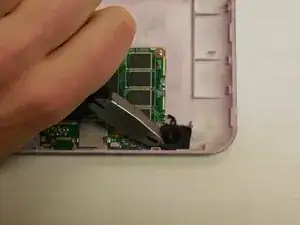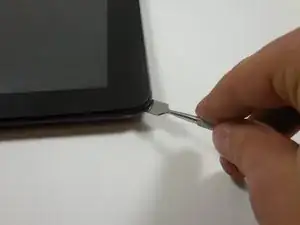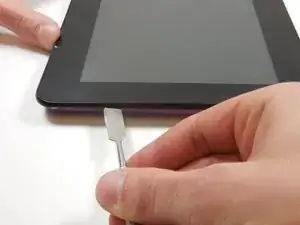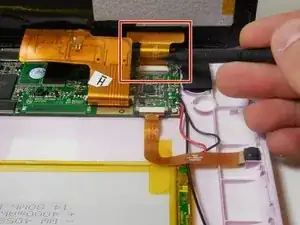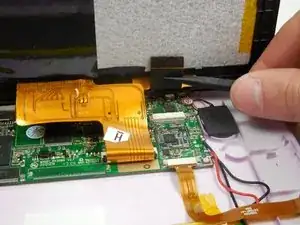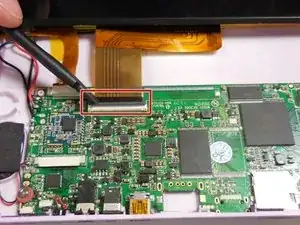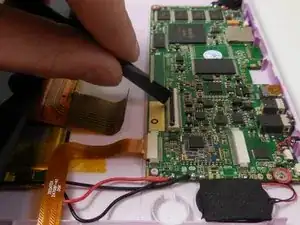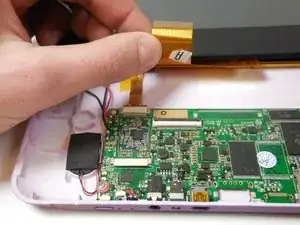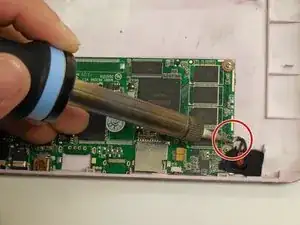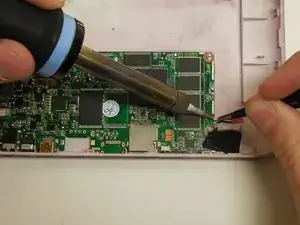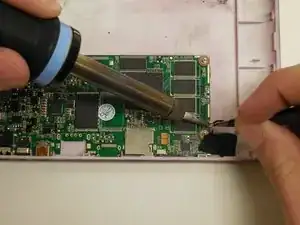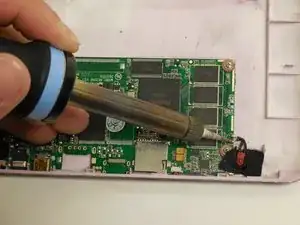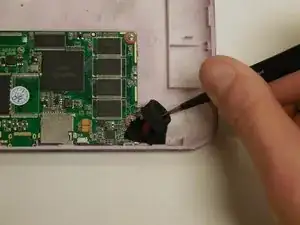Einleitung
During this guide you will be required to unsolder an LED from a PCB and then solder the new LED onto the same connection points.
Werkzeuge
-
-
Insert the flat tip of the metal spudger into the seam between the back panel and the screen.
-
Slide the spudger across the perimeter of the device and gently pry apart at each corner.
-
After the pressure clamps are released orient the device so that the speaker is to the right and the screen is tilted away from you.
-
-
-
Locate the shorter ribbon cable and the black pressure tabs that hold the ribbon cable in place.
-
Use the plastic spudger to gently slide the tabs about 2mm away from connector.
-
-
-
Locate the longer ribbon cable and the pressure clamp that holds the cable in the connection port.
-
Using the plastic spudger, flip the black locking clip up.
-
Once the clip is unlocked, the cable should slide out without resistance
-
-
-
Gently grasp the foam ring with pliers and pull upwards to release the adhesive on the bottom of the ring.
-
-
-
Using a soldering iron apply heat to the connection point between the LED and PCB.
-
When the solder is heated sufficiently (turns liquid and shiny) remove the LED lead with tweezers.
-
Repeat for other connection point.
-
-
-
Using a soldering iron apply heat to the connection point where the LED connects to the PCB.
-
When the solder is heated sufficiently (turns liquid and shiny) insert the LED lead with tweezers. If necessary add additional solder to ensure a solid electrical connection.
-
Repeat for the other connection point.
-
To reassemble your device, follow these instructions in reverse order.
